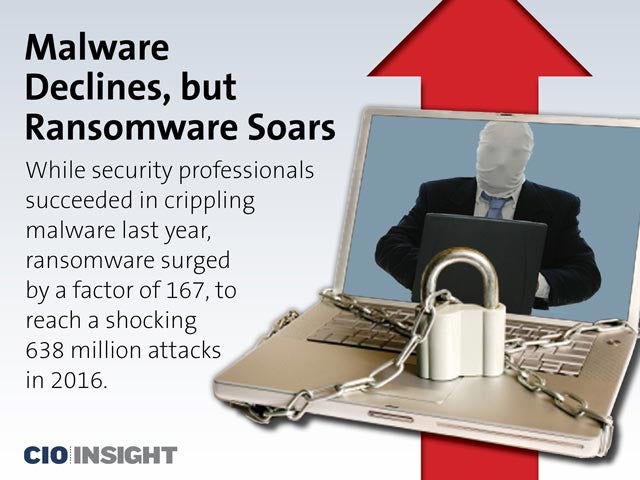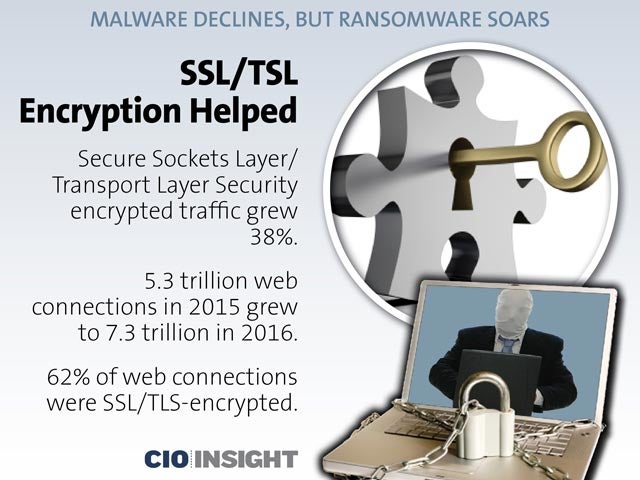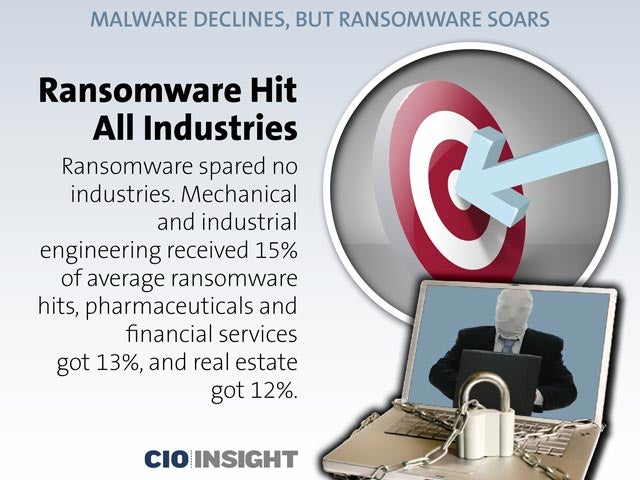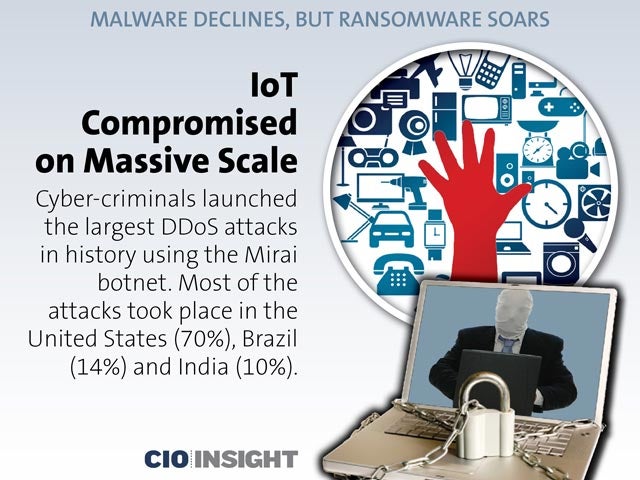
Malware Declines, but Ransomware Soars
 Malware Declines, but Ransomware Soars
Malware Declines, but Ransomware Soars
While security professionals succeeded in crippling malware last year, ransomware surged by a factor of 167, to reach a shocking 638 million attacks in 2016.
 Point-of-Sale Malware Attacks Decline
Point-of-Sale Malware Attacks Decline
POS malware attacks declined by 93% from 2014 to 2016. The number of new POS malware variants decreased by 88%, thanks to chip-based POS systems and the Payment Card Industry Data Security Standard.
 SSL/TSL Encryption Helped
SSL/TSL Encryption Helped
Secure Sockets Layer/Transport Layer Security encrypted traffic grew 38%.
5.3 trillion web connections in 2015 grew to 7.3 trillion in 2016.
62% of web connections were SSL/TLS-encrypted.
 Dominant Exploit Kits Disappear
Dominant Exploit Kits Disappear
In early 2016, the malware market was dominated by Angular, Nuclear and Neutrino, but they later disappeared. The remaining exploit kits fragmented into smaller versions to fill the void. By Q3 2016, there were three versions of Rig.
 Exploit Kits Are Part of Ransomware Delivery
Exploit Kits Are Part of Ransomware Delivery
Variants of Cerber, Locky, CrypMic, BandarChor and TeslaCrypt have become primary workloads.
 There’s a Huge Surge in Ransomware
There’s a Huge Surge in Ransomware
Ransomware grew by a factor of 167 since 2015, from 3.8 million to 638 million attacks. Locky was deployed in 90% of Nemucod attacks.
 Ransomware Hit All Industries
Ransomware Hit All Industries
Ransomware spared no industries. Mechanical and industrial engineering received 15% of average ransomware hits, pharmaceuticals and financial services got 13%, and real estate got 12%.
 IoT Compromised on Massive Scale
IoT Compromised on Massive Scale
Cyber-criminals launched the largest DDoS attacks in history using the Mirai botnet. Most of the attacks took place in the United States (70%), Brazil (14%) and India (10%).
 Android Benefited Only Temporarily
Android Benefited Only Temporarily
Google patched vulnerabilities, but attackers used new techniques to beat them by coaxing Android users into providing permissions that allowed overlays to be used.
 Cyber-Criminals Victimized App Store Users
Cyber-Criminals Victimized App Store Users
Ransomware and self-installing apps plagued third-party app stores. 4,000 distinct apps with self-installing payloads appeared within two weeks.